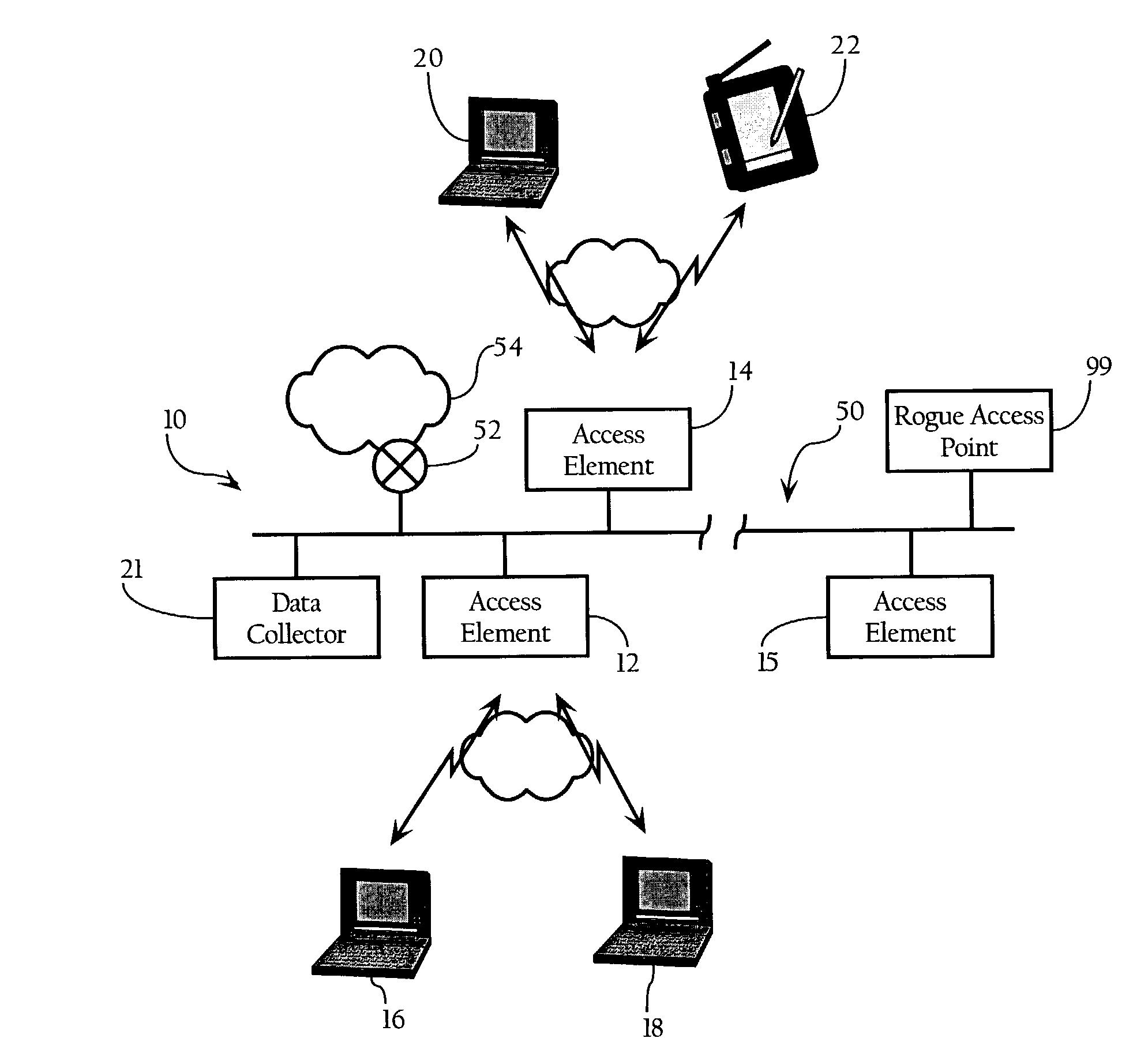Wireless network system including integrated rogue access point detection
a wireless network and access point technology, applied in the field of wireless computer networks, can solve the problems of time-consuming and expensive site surveys and inspections, affecting the performance of the enterprises own wireless network infrastructure, and posing security risks on the wireless network
- Summary
- Abstract
- Description
- Claims
- Application Information
AI Technical Summary
Problems solved by technology
Method used
Image
Examples
Embodiment Construction
[0014]FIG. 1 illustrates a computer network environment including rogue access point detection functionality according to an embodiment of the present invention. The computer network environment depicted in FIG. 1 includes access elements 12, 14, 15 operably connected to wide area network 50 comprising a plurality of local area network segments 10. In one embodiment, the present invention further includes data collector 21 to receive scan data from access elements 12, 14, 15 and process the scan data to identify rogue access points, such as rogue access point 99, as described below. A rogue access point 99 is a wireless access point unknown and / or unauthorized to the enterprise associated with the network environment. A rogue access point may be operably connected to the enterprise's WAN 50 (as shown in FIG. 1) and / or operating within the coverage area or operating range of at least one of the access elements 12, 14, 15. As discussed more fully below, the frames or packets transmitt...
PUM
 Login to View More
Login to View More Abstract
Description
Claims
Application Information
 Login to View More
Login to View More - R&D
- Intellectual Property
- Life Sciences
- Materials
- Tech Scout
- Unparalleled Data Quality
- Higher Quality Content
- 60% Fewer Hallucinations
Browse by: Latest US Patents, China's latest patents, Technical Efficacy Thesaurus, Application Domain, Technology Topic, Popular Technical Reports.
© 2025 PatSnap. All rights reserved.Legal|Privacy policy|Modern Slavery Act Transparency Statement|Sitemap|About US| Contact US: help@patsnap.com



